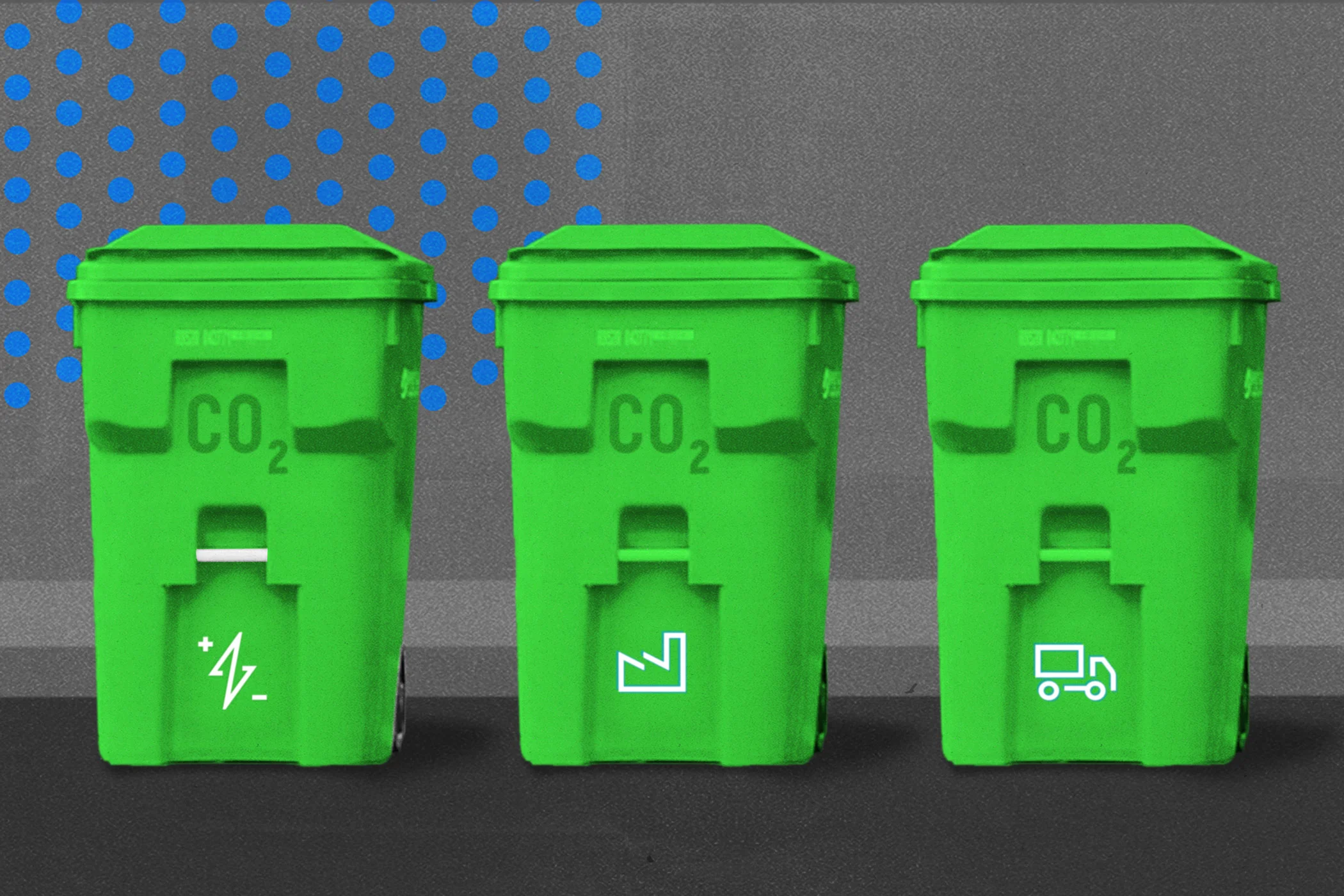Carbon is the trash of our climate change era
Explainers
We pay to get our garbage hauled away every week. Yet we’ve been letting carbon waste pile up in our skies since we first started putting it there more than 250 years ago.
Both our traditional trash and carbon waste represent blind spots in our economic system, where governments step in to facilitate an industry that benefits us in non-economic ways without any direct monetary advantages.
Let’s talk trash!
Our traditional waste is a stinky eyesore and society has supported cleaning it up because it has improved public health and the environment even without direct economic benefits.
Over time, companies—led by Waste Management and Republic Services—have flourished by navigating the complex web of local, state and federal policies that govern our waste industry.
Debates about landfill locations have been controversial, and we’re still not recycling for the most part (just 16% of our global plastic is recycled).
Now compare that to our carbon trash.
Carbon waste is invisible to the naked eye, making it seem easier to ignore than a dumpster overflowing with foul-smelling garbage. But cleaning it up will also improve our public health and the environment, even though capturing CO2 doesn’t have a direct economic benefit.
We’re at the dawn of a new carbon waste management sector. LanzaTech is one of numerous companies aiming to financially thrive here; Occidental Petroleum, Carbon Engineering, Climeworks and Storegga are others.
Debates about where—and how—to store captured CO2 are emerging. The vast majority is likely to be stored, not recycled, due largely to the sheer volume we’re dealing with (see chart below).
Nearly all climate change technologies require far more government involvement than other sectors due to high capital costs and cheap incumbent industries, like fossil-fuel-based tech.
Direct air capture technologies (DAC), which feature massive equipment sucking carbon dioxide out of ambient air, is perhaps the most dependent of all on government support. This is precisely because it lacks a strict monetary value—like trash.
That’s one reason why DAC is among the four initial technologies included in Breakthrough Energy’s Catalyst program. Catalyst is partnering with corporations and governments to bring down technology costs in DAC, green hydrogen, sustainable aviation fuel and long-duration energy storage.
“The one that’s hardest is direct air capture because that mainly has an environmental benefit,” said Bill Gates, Breakthrough Energy’s founder, in a Bloomberg interview last fall. “It’s not a product like the other three are.” (In fact, that comment inspired this article!)
The lack of an inherent product value also explains the relative hesitancy from venture capitalists to invest in DAC.
Direct air capture “is more like taking out the garbage than investing in Uber,” said Peter Kelemen, a professor at Columbia University’s Earth Institute. “There are a lot of people who make money on handling garbage.” But venture capitalists feel it is risky to operate in industries when the customer is the government, he added.
That’s starting to change.
The amount of venture capital money going into carbon capture technologies globally has increased almost tenfold since 2016, reaching nearly $450 million last year, according to PitchBook, a financial research firm and data provider. Most of that ($330 million) is going into DAC as opposed to carbon capture directly at emitting facilities, which is separate but related technology.
By comparison, though, that’s not much. Venture capitalists poured more than $35 billion into clean energy and climate technologies last year, nearly half of that going to electric transportation alone.
Politicians are also ramping up government support for the technology. The $1.2 trillion infrastructure law directs $3.5 billion in Energy Department funding toward carbon removal technologies, which is part of the more than $100 billion going to climate and energy programs.
That will be a big boon for the nascent sector, but it doesn’t fix its intrinsic economic problem: making us pay for carbon waste like we do our garbage.
Jennifer Holmgren, CEO of carbon recycling firm LanzaTech, says we should view a tax on carbon emissions like a trash tax.
“We all pay to have trash hauled, right? But somehow we seem to struggle with the concept of a carbon tax. And I’m not sure what the difference is,” Holmgren said.
Although a carbon tax remains politically unpalpable, Congress is debating whether to expand an existing tax incentive called 45Q, for its placement in the tax code, which could help nudge us in the right direction.
Holmgren, in Cipher’s first “Innovators” virtual interview that aired earlier this month, said: “It’s really important for us to think about waste collectively and how we get rid of waste to ensure that we optimize societal good.”
Editor’s note: Breakthrough Energy supports Cipher in addition to Catalyst. Gates is also separately an investor in Carbon Engineering.